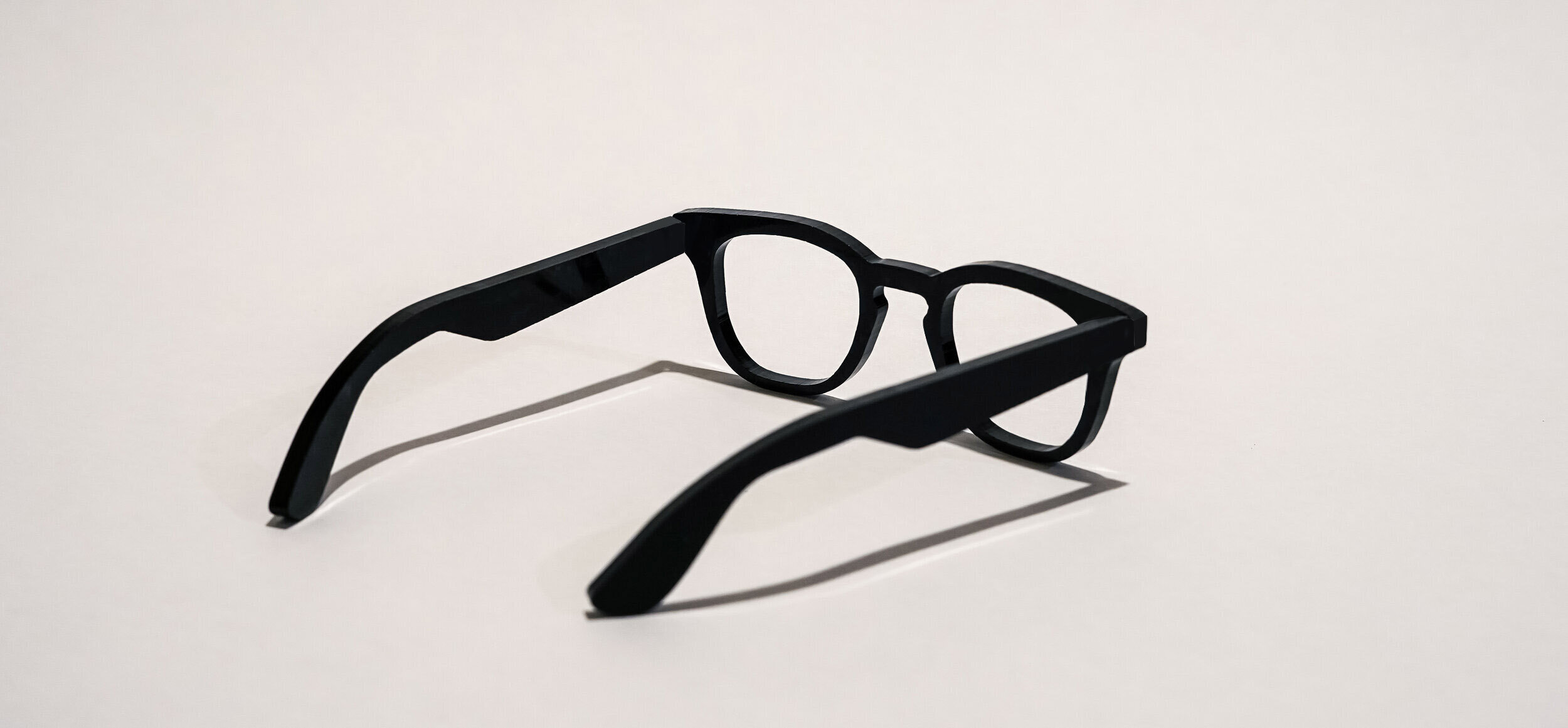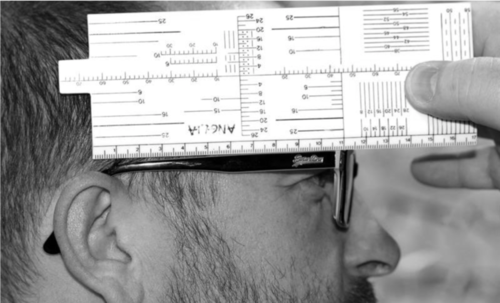
Designing Glasses
Perception
There is a stereotype that elders only wear thin or seamless glasses. However as time is changing, there are new generations of elders who would continue to enjoy wearing trendy glasses as they have in the past and current elders would also be prone to wearing acetate glasses.
Breaking From Gadget Looks
To introduce a frame that is aesthetically well designed despite the limitation of having thickness due to integrating electronic components. Consumers want daily look glasses, not a standout high tech product.
Front Frame
Criteria
Classic Modern
Fits Comfortably
Unisex
Initial Front Frame Processes
Understanding Language: From Banton Framework’s What are the parts of the glasses called?
Studying Angles
Learning Measurements
Rough Mockups
Understanding Styles
Observing how different styles look on people
1st iterations
Feedback round 1
Adjustment and 2nd iterations
Feedback round 2
Form Study Insight Example
During frame design iterations, I found out that the bridge length, located in between one’s eyes and top of the nose, is one of extremely important features in determining the look of the wearer. If the width size is too narrow, it can make a person look like a “bird” or look as if they have less distance between the eyes. And if the length size fills up, it can make the frame look bulky.
2. Temple Arm Design
Current Market Glasses
Problem: Some of the smart glasses in the market do not fit well when worn
Observation: Why are the arms shaped differently? Specifically, why are the components spaced differently?
Why design needs to get right from the start
Dispensing Optics
Many of the Glasses retail stores offer fitting service where a certified dispensing Optician adjusts the purchased frames to fit comfortably on the wearer. Most common adjustments are made to the temple arm by heating and bending the angle of the back arm.
Due to the personalised service by the opticians, glasses makers can either make temple arms based on standardised template or design differently without worrying for it to fit perfectly on everyone.
However, this service cannot be applied to the current smart glasses, because dispensing can potentially cause breakage in electronic components. Because the frame cannot be easily altered, it is important to carefully design ergonomically from the start.
Focus Points
Weight Balance
2. Curve for the head
3. Curve for the ear
4. Frame position and leg curve relations
Iterations
Identifying Pain Points
Each red mark points the part of the frame arms that makes the the ear uncomfortable.
The touch points were quickly identified and eliminated during iterations.
Curve X Frame’s Height
The curve of the arm rests on the ear and positions the whole frame. Therefore, the curve, along with the nose bridge, determines the height of the front frame.
Weight and Balance
The front frame has a weight due to microphone integrated on nose bridge. To neutralize, the weight of end side of the arm’s end needs to be even. Otherwise, the weight shift on the front will make glasses slide off.
Curve is also important to keep the balance. Straight end arms have lesser support than arms with curves, which will likely make the frame slide downwards.
















































